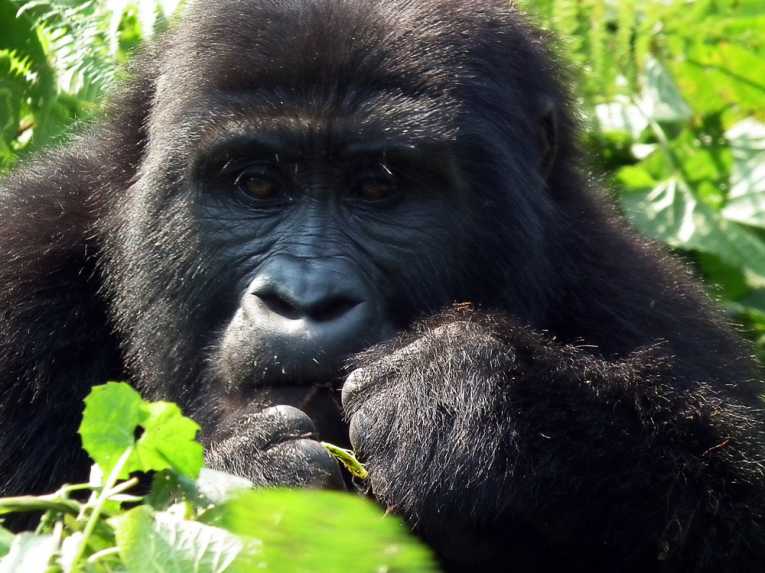Mountain gorillas, as with most wild animals, are notoriously shy creatures, able to hide themselves in the dense jungles of the Virungas Massif and ready to flee to higher ground if they feel in any way threatened. So how come tourists can get within a few metres of them? And how come researchers, not to mention television documentary crews, are also able to get within touching distances of the great apes?
The answer lies in a process known among those in the conservation trade as habituation. According to experts, this term can be defined as a behavioral response that results from repeated stimulation, in this case, exposure to human beings.
"Gorilla habituation is the term used to describe the methods used by scientists to bring gorillas and human close", says Tuver Wundi, who has been working closely with gorillas for more than ten years in DR Congo. He explains that, far from delivering instant results, habituation is a very lengthy process that could take a few years, meaning having a great deal of patience is just as important as having an intimate knowledge of gorillas behaviour. "Time is needed to change the way gorilla perceive humans, so perseverance is the key", adds Wundi.
So, how do you go about habituating wild mountain gorillas? According to experts there are different techniques that can be used so that wild gorillas recognize humans - usually scientists at first - as a neutral entity, rather than a threat, within its natural environment.
"Habituation can involve researchers tracking down a group of gorillas and subjecting them to human exposure daily over a period of time", says Kelly J. Stewart, research associate in the Anthropology Department at the University of California. Another technique involves food provisioning, which can also serve to reduce fear of humans and allow researchers to have closer contact with them. This technique entails providing titbits of favourite foods like fruits, which allows the researchers to observe the subjects as they eat.
"Researchers perform many exercises in order to know how a group of gorillas lives in the forest before they start habituation for real," explains Wundi, who has also been part of The Gorilla Organization for more than a decade and who routinely visits habituated groups in the Virunga National Park. "It is important to know the animal behaves in the wild before you try anything new. After all, gorillas have different personalities, just like humans. Some may not be so welcoming as others!" he adds.
In her book Gorillas, Stewart describes in detail the typical habituation process carried out by researchers. Initially, as soon as the silverback leader perceives the presence of human beings, he charges or screams and the group, who he will protect with his life, flees. Next comes the curiosity stage, when the animals linger at a safe distance, beating their chests in excitement and peering through the foliage to catch a glimpse of the intruders in their forest. Eventually, the animals lose interest and simply get used to the presence of observers, paying them little attention. "The success of the process depends partly on the nature of the silverback, if he is a calm animal who habituates quickly, then so will his group. Some silverbacks never do accept observers", highlights the author.
Wundi feels that sometimes people have a misconception of the gorilla's behavior, often believing them to be completely unapproachable, something enhanced knowledge of the great apes can put straight. "Some movies have created the image that gorillas can be dangerous, but with education and tourism, people now can discover that gorillas are friendly and happy to share the forest in your company", says the expert.










